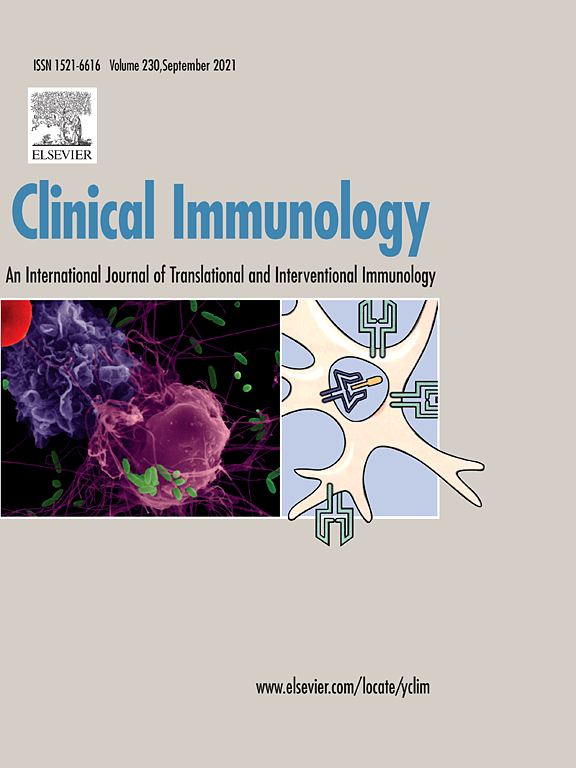Common hematological values predict unfavorable outcomes in hospitalized COVID-19 patients
Dr. Isaac Núñez a,*,1, Dr. Ángel A. Priego-Ranero a,1, Dr. Benjamín García-González a,1, Dra. Brenda Jiménez-Franco a,1, Dra. Rebeca Bonilla-Hernández b,1, Dr. Guillermo Domínguez-Cherit b,c, Dr. Javier Merayo-Chalico d, Dr. José C. Crispín c,d, Dra. Ana Barrera-Vargas d, Dr. Sergio Iván Valdés-Ferrer e,f,g,**.
a Internal Medicine Residency Training Program, Departamento de Medicina Interna, Instituto Nacional de Ciencias M´edicas y Nutrici´on Salvador Zubir´an, Vasco de Quiroga 15, Mexico City 14080, Mexico
b Departamento de Medicina Crítica, Instituto Nacional de Ciencias Médicas y Nutrición Salvador Zubirán, Vasco de Quiroga 15, Mexico City 14080, Mexico
c Escuela de Medicina y Ciencias de la Salud, Tecnologico de Monterrey, Ave. Morones Prieto 3000, Monterrey, NL, 64710, Mexico
d Departamento de Inmunología y Reumatología, Instituto Nacional de Ciencias Médicas y Nutriciópn Salvador Zubirán, Vasco de Quiroga 15, Mexico City 14080, Mexico
e Departamento de Infectología, Instituto Nacional de Ciencias Médicas y Nutrición Salvador Zubirán, Vasco de Quiroga 15, Mexico City 14080, Mexico
f Departamento de Neurología, Instituto Nacional de Ciencias Médicas y Nutrición Salvador Zubirán, Vasco de Quiroga 15, Mexico City 14080, Mexico
g Center for Biomedical Science, Feinstein Institutes for Medical Research, 350 Community Dr., Manhasset, NY 11030, USA
Originally Published / febraury 4, 2021 / https://doi.org/10.1016/j.clim.2021.108682
Abstract
COVID-19 can range from asymptomatic to life-threatening. Early identification of patients who will develop severe disease is crucial. A number of scores and indexes have been developed to predict severity. However, most rely on measurements not readily available. We evaluated hematological and biochemical markers taken on admission and determined how predictive they were of development of critical illness or death. We observed that higher values of readily available tests, including neutrophil:lymphocyte ratio; derived neutrophil index; and troponin I were associated with a higher risk of death or critical care admission (P < 0.001). We show that common hematological tests can be helpful in determining early in the course of illness which patients are likely to develop severe forms, as well as allocating resources to those patients early, while avoiding overuse of limited resources in patients with reduced risk of progression to severe disease.
Introduction
In December of 2019 in Wuhan, China, a respiratory illness caused by a new coronavirus (SARS-CoV-2) was described, giving place to a new syndrome known as COVID-19 (COronaVIrus Disease 2019) [1], spreading rapidly and reaching pandemic dimensions by March 2020 [2]. As of 1 January 2021, at least 81.9 million cases of (and 1.9 million deaths attributed to) COVID-19 had been reported globally [2]. In Mexico, 1.4 million confirmed cases and 126,851 deaths attributed to COVID-19 have occurred [3]. Most cases of COVID-19 are mild and selflimited.
Results
Two hundred and eighty-two patients were hospitalized with a diagnosis of COVID-19 during the study period. Clinical, demographic and laboratory characteristics are described in Table 1. All patients had symptoms on arrival to the Emergency Room. Patients who developed the primary outcome were significantly older and had a higher BMI, but had no differences in prevalence of diabetes or hypertension. Dyspnea, cough, and chest pain were also more common among patients who developed an outcome. Respiratory rate and other vital signs were also modestly higher in the outcome group.




